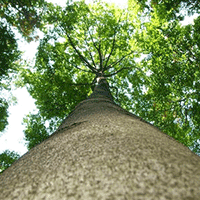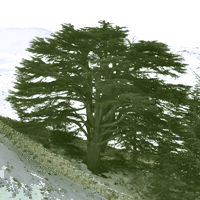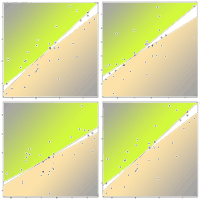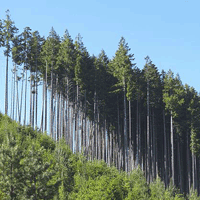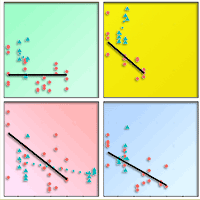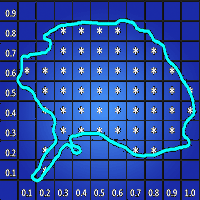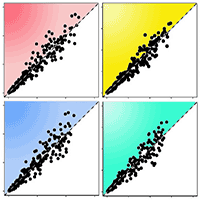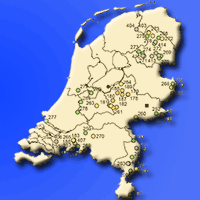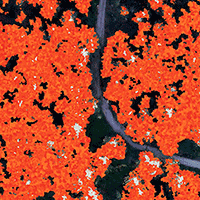
Biomass production of young lodgepole pine (Pinus contorta var. latifolia) stands in Latvia
A Jansons (1) , L Sisenis (2), U Neimane (1), J Rieksts-Riekstins (1)
iForest - Biogeosciences and Forestry, Volume 6, Issue 1, Pages 10-14 (2013)
doi: https://doi.org/10.3832/ifor0637-006
Published: Jan 14, 2013 - Copyright © 2013 SISEF
Short Communications
Collection/Special Issue: IUFRO 7.01.00 - COST Action FP0903, Kaunas (Lithuania - 2012)
Biological Reactions of Forest to Climate Change and Air Pollution
Guest Editors: Elena Paoletti, Andrzej Bytnerowicz, Algirdas Augustaitis
Abstract
Biomass as a source of renewable energy is gaining an increasing importance in the context of emission targets set by the European Union. Large areas of abandoned agricultural land with different soils are potentially available for establishment of biomass plantations in the Baltic states. Considering soil and climatic requirements as well as traits characteristic for lodgepole pine (Pinus contorta Dougl. var. latifolia Engelm) and the scarcity of published knowledge, we assessed the above-ground biomass of Pinus contorta in comparison to that of native Scots pine (Pinus sylvestris L.) and factors affecting biomass production. Data were collected in 3 experimental trials, located in two sites in central part of Latvia: Zvirgzde and Kuldiga (56°41’ N, 24°28’ E and 57°03’ N, 21°57’ E, respectively). Trials were established with density 5000 tree ha-1, using seed material from Canada (50°08’-60°15’ N, 116°25’-132°50’ W) and two Pinus contorta stands with unknown origin growing in Latvia. Results reveal that absolute dry aboveground biomass of Pinus contorta reaches 114 ± 6.4 t ha-1 at age 16 on a fertile former arable land, 48 ± 3.6 and 94 ± 9.4 t ha-1 at age 22 and 25, respectively, on a sandy forest land (Vacciniosa forest type). The biomass is significantly (p < 0.01) and considerably (more than two-fold) higher than that of the native Pinus sylvestris and the productivity is similar (in fertile soils) or higher (on poor soils) than reported for other species in energy-wood plantations. Provenance was a significant factor affecting the above-ground biomass, and the ranking of provenances did not change significantly between different soil conditions. It provides opportunities for further improvement of productivity using selection.
Keywords
Introduced Species, Productivity, Provenance, Above-ground Biomass
Authors’ Info
Authors’ address
U Neimane
J Rieksts-Riekstins
Latvian State Forest Research Institute “Silava”, Rigas Street 111, LV-2169 Salaspils (Latvia)
Forestry Faculty, Latvia University of Agriculture, Akademijas Street 14, LV-3001 Jelgava (Latvia)
Corresponding author
Paper Info
Citation
Jansons A, Sisenis L, Neimane U, Rieksts-Riekstins J (2013). Biomass production of young lodgepole pine (Pinus contorta var. latifolia) stands in Latvia. iForest 6: 10-14. - doi: 10.3832/ifor0637-006
Academic Editor
Marco Borghetti
Paper history
Received: Jul 13, 2012
Accepted: Oct 31, 2012
First online: Jan 14, 2013
Publication Date: Feb 05, 2013
Publication Time: 2.50 months
Copyright Information
© SISEF - The Italian Society of Silviculture and Forest Ecology 2013
Open Access
This article is distributed under the terms of the Creative Commons Attribution-Non Commercial 4.0 International (https://creativecommons.org/licenses/by-nc/4.0/), which permits unrestricted use, distribution, and reproduction in any medium, provided you give appropriate credit to the original author(s) and the source, provide a link to the Creative Commons license, and indicate if changes were made.
Web Metrics
Breakdown by View Type
Article Usage
Total Article Views: 56656
(from publication date up to now)
Breakdown by View Type
HTML Page Views: 47157
Abstract Page Views: 3685
PDF Downloads: 4378
Citation/Reference Downloads: 26
XML Downloads: 1410
Web Metrics
Days since publication: 4701
Overall contacts: 56656
Avg. contacts per week: 84.36
Citation Metrics
Article Citations
Article citations are based on data periodically collected from the Clarivate Web of Science web site
(last update: Mar 2025)
Total number of cites (since 2013): 7
Average cites per year: 0.54
Publication Metrics
by Dimensions ©
Articles citing this article
List of the papers citing this article based on CrossRef Cited-by.
References
A complex research project: factors in Latvia affecting the health of pine (planting stock and young plantations), and recommended protective measures. Proceeding of the Latvian Academy of Sciences 7 (552): 79-80.
Gscholar
Resistance trials of Scots pine clones in Latvian SSR. In: Proceedings of the “3rd International Workshop on the Genetics of Host-Parasite Interactions in forestry - Resistance to diseases and pests in forest trees” (Heybroek HM, Stephan BR, Weissenberg K eds). Wageningen (NL) 14-21 September 1980, pp. 448-449.
Gscholar
Biomass and technical properties of small sized birch and grey alder. Folia Forestalia 500: 1- 37.
Gscholar
Fundamentals of forest classification in Latvia SSR. Apskats, Riga, Latvija, pp. 24. [in Latvian]
Gscholar
Volume yield superiority of Lodgepole pine compare to Scots pine in Sweden. In: Proceedings of the Meeting IUFRO WP 2.02.06 and Frans Kempe Symposium “Pinus contorta - from Untamed Forest to Domesticated Crop” (Lindgren D ed). Umeå (Sweden), 24-28 August 1992. Report 11, Department of Forest Genetics and Plant Physiology, Swedish University of Agricultural Sciences, Uppsala, Sweden, pp. 69-80.
Gscholar
Scots pine seed orchard tests in northern Sweden: results from assessments in summer 1984 of field trials planted 1973-1975. Rapport, Institutet for skogsforbattring, Uppsala, Sweden, pp. 44. [in Swedish with English summary]
Gscholar
Lodgepole pine (Pinus contorta Dougl. ex Loud.) in Söe arboretum (Jõgeva county). Dendrological Researches in Estonia 1: 76-78. [in Estonian with English summary]
Gscholar
SCA’s provenance experiments with Lodgepole pine in north Sweden. In: Proceedings of the Meeting IUFRO WP 2.02.06 and Frans Kempe Symposium “Pinus contorta - from Untamed Forest to Domesticated Crop” (Lindgren D ed). Umeå (Sweden), 24-28 August 1992. Report 11, Department of Forest Genetics and Plant Physiology, Swedish University of Agricultural Sciences, Uppsala, Sweden, pp.146-161.
Gscholar
Retrospective analysis of Lophodermium seditiosum epidemics in Estonia. Acta Silv. Lign. Hung., Spec. Edition, pp. 31-45.
Gscholar
Yield of woody biomass from southern Norway and their suitability for combustion and gasification purposes depending on the harvest frequency. In: Proceedings of “Use of Bioenergy in the Baltic sea region. The 2nd International Baltic Bioenergy Conference” (Barz M, Ahlhaus M eds). Stralsund (Germany) 2-4 November 2006. University of Applied Sciences, pp. 176-185.
Gscholar
Carbon stock in short rotation Salicaceae. In: “Use of biomass for energy purposes in business” (Jasiulewicz M ed). Koszalin, Poland, pp. 43-50.
Gscholar
Where to use which Pinus contorta provenance? In: Proceedings of the Meeting IUFRO WP 2.02.06 and Frans Kempe Symposium “Pinus contorta - from Untamed Forest to Domesticated Crop” (Lindgren D ed). Umeå (Sweden), 24-28 August 1992. Report 11, Department of Forest Genetics and Plant Physiology, Swedish University of Agricultural Sciences, Uppsala, Sweden, pp.162-180.
Gscholar
Provenance trials with Lodgepole pine, Pinus contorta var. latifolia. Institutet för Skogsförbättring, Skogsträdsförädling, no. 8, pp. 4. [in Swedish with English summary]
Gscholar
Structure and productivity of grey alder stands. PhD thesis, Latvia University of Agriculture, Jelgava, Latvia, pp. 127.
Gscholar
Pine or lodgepole pine - the choice between stability and growth. Fakta skog Nr15, Sveriges Lantbruksuniversitet, Umeå, Sweden. [in Swedish]
Gscholar
Biomass production and nutrient and water consumption in an Alnus incana stands. Folia Forestalia 628: 1-24. [in Finnish with English summary]
Gscholar
Biomass production and nutrient consumption in Alnus incana stands. Folia Forestalia 728: 1-16. [in Finnish with English summary]
Gscholar
Lodgepole pine in Alberta. Canada Department of Forestry, Bulletin no. 127, pp. 153.
Gscholar
Six year results from a Pinus contorta provenance trial series in southern Sweden. In: Proceedings of the Meeting IUFRO WP 2.02.06 and Frans Kempe Symposium “Pinus contorta - from Untamed Forest to Domesticated Crop” (Lindgren D ed). Umeå (Sweden), 24-28 August 1992. Report 11, Department of Forest Genetics and Plant Physiology, Swedish University of Agricultural Sciences, Uppsala, Sweden, pp.137-145.
Gscholar
The distribution and botanical characteristics of lodgepole pine: biogeographical and management implications. In: “Lodgepole pine: the species and its management” (Baumgartner DM ed). Pullman, Washington State University, USA, pp. 1-13.
Gscholar
Biomass and stem volume equations for tree species in Europe. Silva Fennica Monographs 4: 63.
Gscholar

